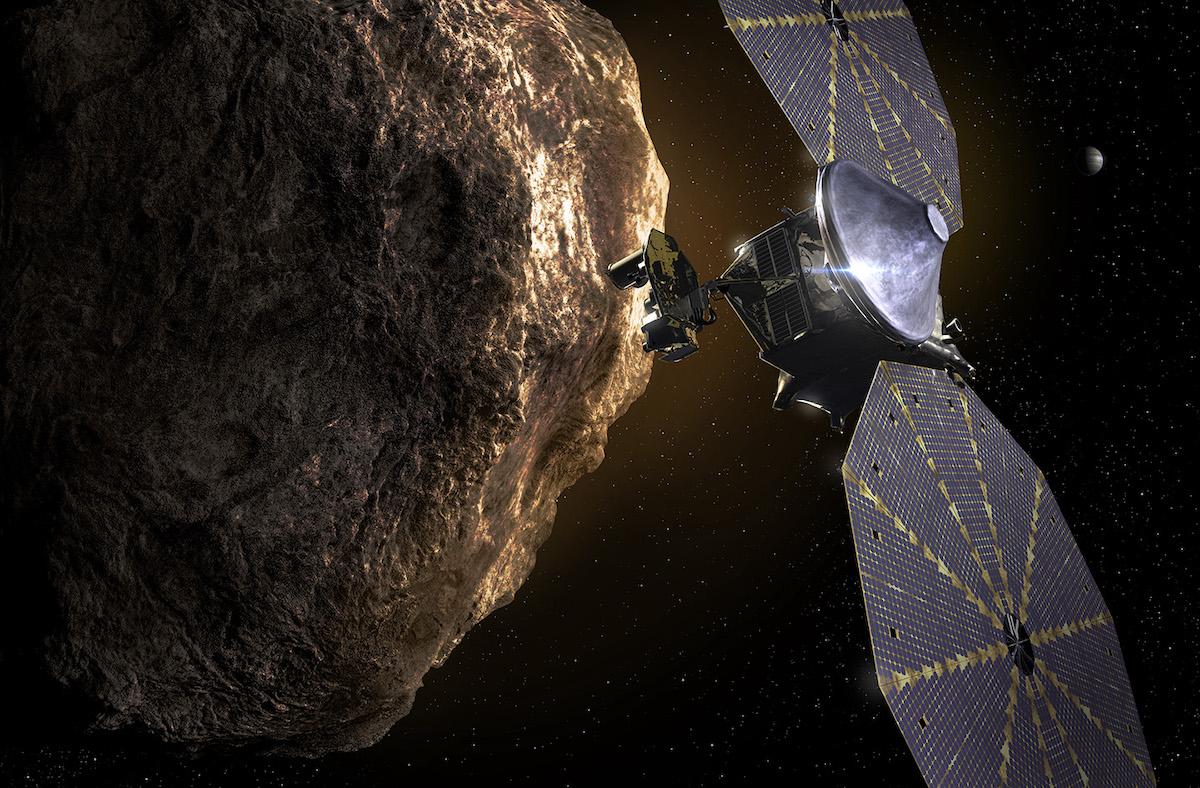
A rendering of the Lucy spacecraft with solar arrays fully deployed.
NASA has suspended efforts to fully deploy a troublesome solar array on its Lucy probe, but says the mission can still go on as planned.
The array failed to deploy fully following the launch of the Lucy spacecraft on the first-ever mission to Jupiter’s Trojan asteroids.
In an update issued Jan. 19, the NASA Goddard Space Flight Center mission team stated it believes the array has achieved 98% deployment. Though still unlatched, the circular array is stable enough to complete its mission without further efforts to enhance deployment, according to the update.
The spacecraft lifted off from Cape Canaveral Air Force Station, Florida, atop an Atlas V rocket on Oct. 16, 2021, the start of a $989 million, 12-year mission to fly by one main belt asteroid and seven Trojans, which are believed to be the remnants of the primitive materials that formed the outer planets.
Soon after launch, Lucy began the deployment of two circular, 12-ft.-dia. solar arrays, one of which failed to fully deploy and latch in place. Over 2022, the mission team managed to achieve a tensioned but unlatched status with the initially limp array.
The decision to suspend further deployment efforts is based on the spacecraft’s performance during a close flyby of the Earth on Oct. 16, 2022—the first of two gravity assists required to propel Lucy toward an encounter with the main belt asteroid 52246 Donaldjohanson in 2025. The second Earth gravity assist is to unfold on Dec. 12, 2024.
The mission team is to assess the troubled solar array during the spacecraft’s initial engine firing, planned for February 2024. During the fall of 2024 as Lucy warms up during its approach to Earth, the mission team will re-evaluate any risk factors associated with the array.
If the mission unfolds as planned, Lucy is to fly by five Trojans gathered ahead of Jupiter as it orbits the Sun in 2027 and 2028.
The spacecraft is to then journey back to Earth for a third flyby and gravity assist in 2031 to propel it back toward Jupiter for close flybys of two Trojans trailing the large planet in 2033.
